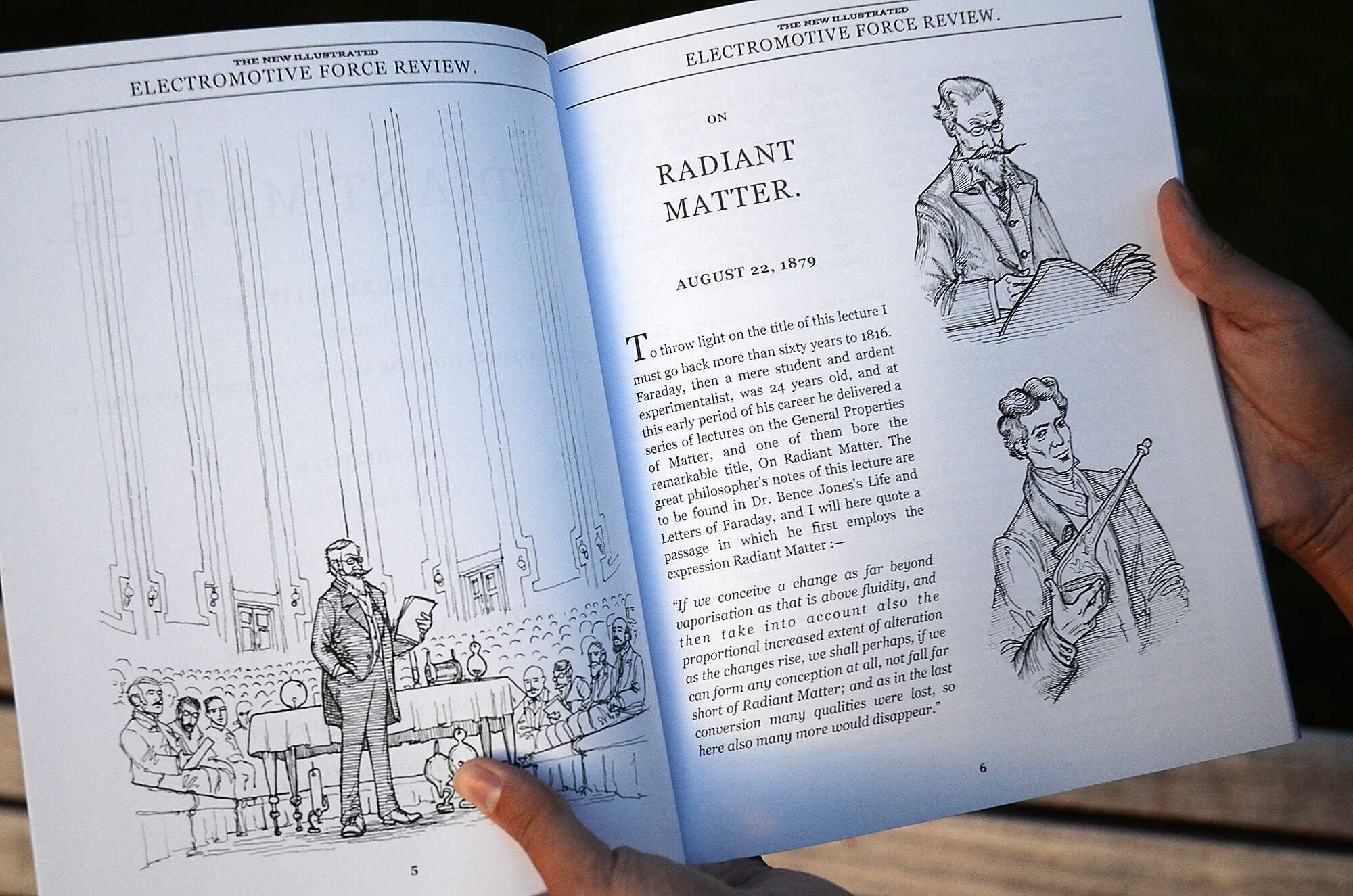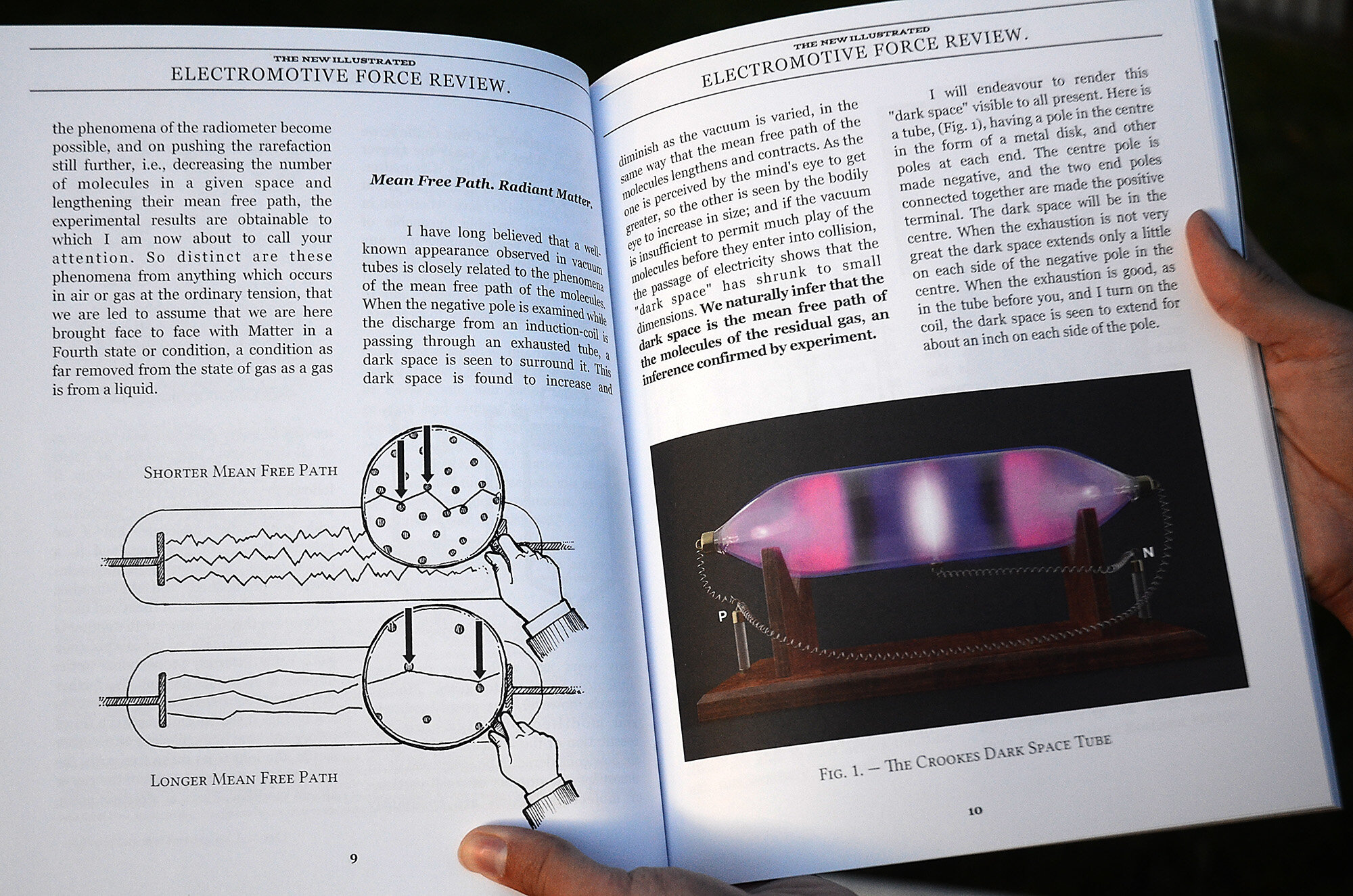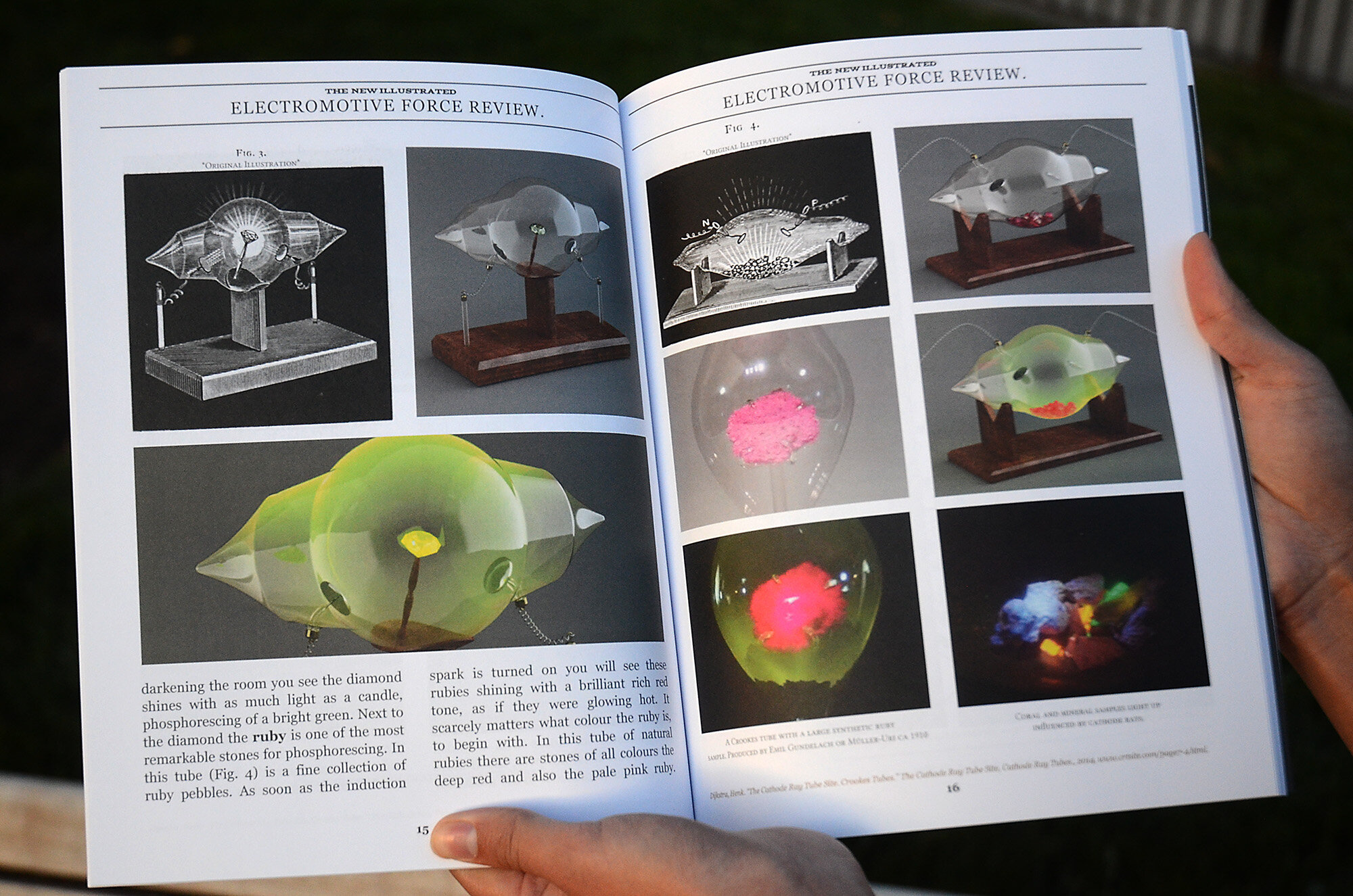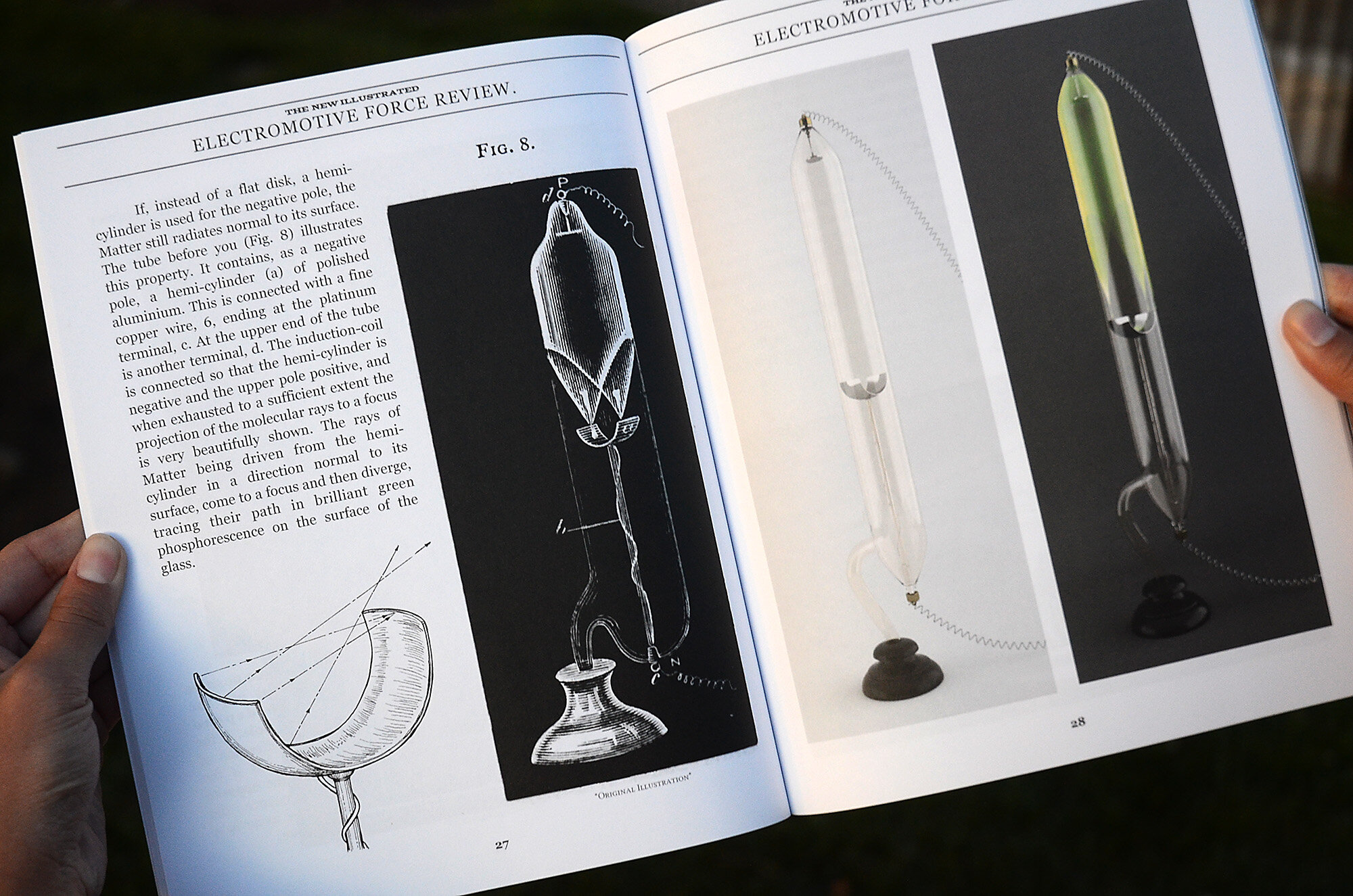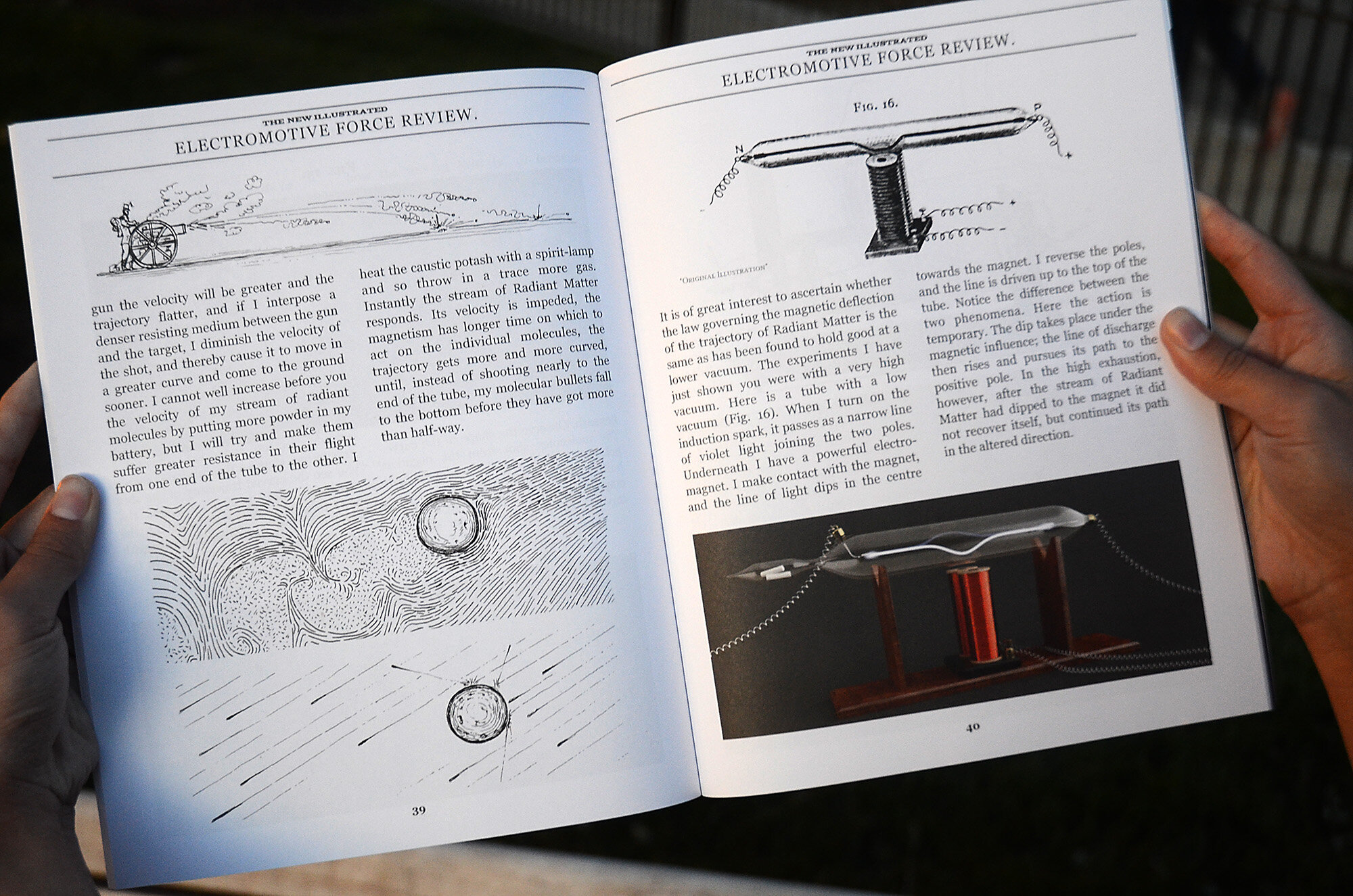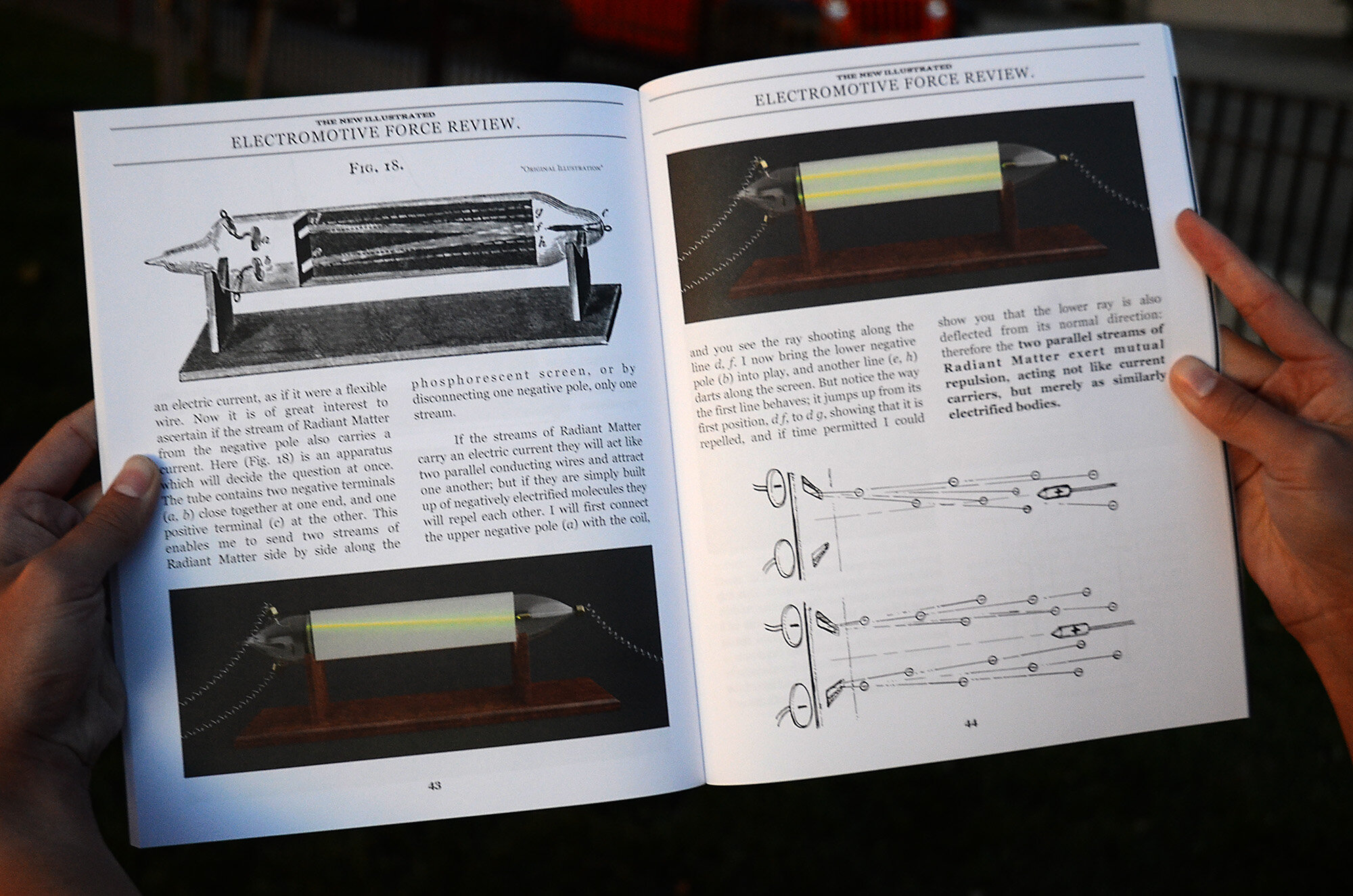EASY TO UNDERSTAND
VISUALLY TRANSLATED
HUNDREDS OF PICTURES
FOR AGES 2+
In the previous installment of the Electromotive Force Review, we explored Nicola Tesla's famous follow-up 1892 lecture, "Experiments with Alternate Currents of High Potential and High Frequency," and learned how to efficiently distill the various heating effects associated with electrical phenomena. Mr. Tesla shows the various electrical heating effects seen in solids and gases and how they are a result of mechanical bombardment from molecules and atoms set forth into violent motion by rapidly varying electrostatic forces or stresses. Mr. Tesla demonstrates the importance of electrostatic screening by bringing dense materials like diamonds and silicon-carbide to the point of fusion, and causes it to emit less light than when fused by the application of energy in ordinary ways. He makes it clear that the key to continuous and efficient bombardment of solids or gases is produced more effectively with the usage of high frequencies and high potentials.
In this third issue of the Electromotive Force Review, we will go back 13 years to Sir William Crookes 1879 “On Radiant Matter” lecture that inspired Mr. Tesla’s curiosity for light while attending college at the Austrian Polytechnic School in Graz. On February 3rd, 1892 lecture, “Experiments with Alternate Currents of High Potential and High Frequency,” Mr. Tesla talks about his inspiration from Sir William Crookes:
When I was at college, a good time ago; I read, in a translation (for then I was not familiar with your magnificent language), the description of his experiments on radiant matter. I read it only once in my life—that time—yet every detail about that charming work I can remember this day. Few are the books, let me say, which can make such an impression upon the mind of a student.
Ernst Willem van den Bergh, a leading researcher, scientist, and my inspiration on the works of Nikola Tesla, summarizes the influence of Sir William Crookes:
While examining Tesla’s lectures and patents, we notice that it looks very much like an extension of Crookes work, and Tesla does mention him a number of times as a source of inspiration. Sir William Crookes in turn was inspired by Faraday who believed there should be a 4th state of matter (beyond solid, liquid and gaseous) which he called “radiant”. Crookes reasoned that phases of matter differ mostly in density, and so by reducing the pressure of a gas we may find this 4th state. He started experimenting with highly evacuated tubes, passing electric currents through them and found some truly remarkable facts. He concluded that the negative electrode (cathode) would emit rays perpendicular to its surface. (later he found that also the anode emitted some sort of rays) He assumed that these rays were the radiant state of the residual gasses inside the tube.
“On Radiant Matter” captures the origins of early particle physics, are now re-illustrated with colored renderings to bring clarity to the principle logic behind the 4th state of matter. The renderings of the bulbs and their associated effects were produced in Blender, a free and open source 3D creation suite. I deeply extend my gratitude to the Blender community who enabled me the tools to reproduce the studies depicted in this lecture.
I want to inspire similar minds and dispel the mysteries of our universe. To go into the future, we must first go back.
-Kyle Longean Dell’Aquila
陳龍吟


